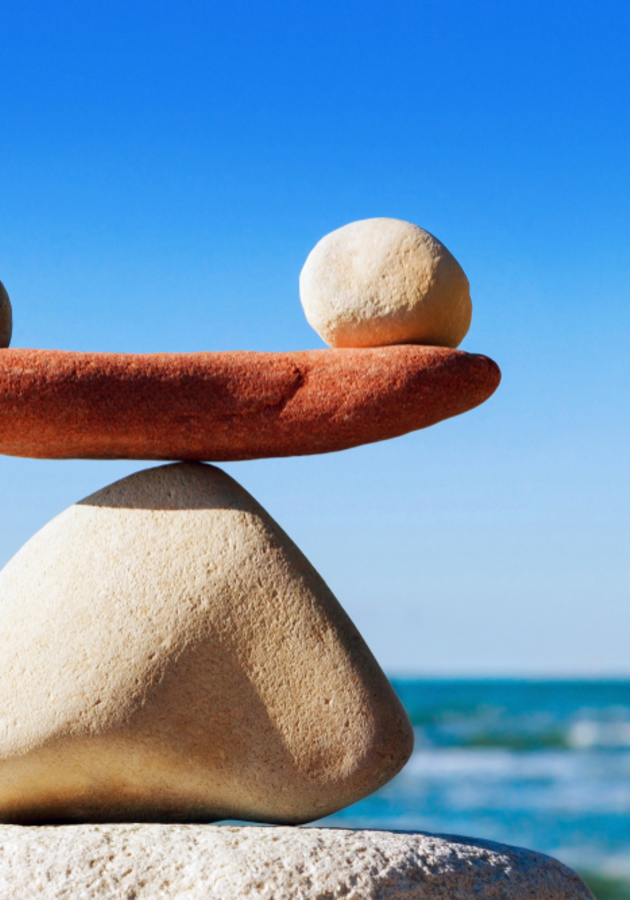‘’Build the Life You Want’’ is a result of the collaboration of two people who, in different ways, pursued the same mission over the years - to help other people become happier. These two are Oprah Winfrey, a famous talk show host, and Arthur C. Brooks, a Harvard University professor who studies the science of happiness. By revealing how our mind and brain work, how you can manage your emotions, and build relationships, their book helps you live a better and happier life. So, get ready to hear what these two happiness specialists have to say!
How did Albina Quevedo become happier?
As she lay in her bed in a small Barcelona apartment, 93-years-old Albina Quevedo recounted the trials of her life. She thought about her youth when she went to parties, enjoyable days at the beach with people long gone, the times when she got married, and the births of all three children. Generally, when people recall the times when they were younger, they conclude they were much happier. However, that wasn’t the case with Albina, whose conclusion was that she only became happier as she grew older. “I know it sounds strange because my life now seems bleak, but it’s true,” she said with a smile. “As I’ve aged, I have learned the secret to getting happier.”
Albina was a little girl when the brutal Spanish War broke out. She spent it often hungry, in hiding, and with the pictures of suffering and dead bodies around her. After the war, her life didn’t improve as her father went to prison for being in service on the losing side of that conflict. However, it turned out that it was when she started her own family that the real troubles began. Several years into marriage, her husband left, and she had to bring up the children alone. She drowned in poverty, and struggles of raising her family without help for years, wondering every day when the unhappiness would stop and the new, brighter life would begin.
One day, her outlook on life seemed to change, although the circumstances she lived in did not. Albina, at the age of 45, decided to enroll in a college to become a teacher. It wasn’t easy to study while being a single mother, but in the end, she graduated at the top of her class. As a result, Albina got a teaching job she treasured and with which she could support her family. It was about this time when she reconciled with her husband, with whom she spent a happy life until death separated them.
Albina was a person known among friends and family for her happiness. So, how did she manage to do it - rise from sadness and grow a happier life other people marveled at ever since?
Happiness is a direction, not a destination
When people talk about happiness, they usually mention it is about achieving and keeping certain feelings, such as joyfulness and cheerfulness, and that they can reach it once they overcome some obstacles. As Brooks notes, “I want to be happy” is almost always followed by “but...” Consider the case of Albina, who, at first, thought she could be happy only if the circumstances that kept her stuck in unhappiness changed. Of course, this kind of thinking is common to many people, but, as Brooks emphasizes, it is wrong because your circumstances and source of unhappiness don’t have to stop you from being happy. Another common misconception about happiness is that it is, much like El Dorado, a legendary city of gold, a destination we need to reach. Nevertheless, ‘’happiness is not a destination. Happiness is a direction. We won’t find complete happiness on this side of heaven, but no matter where each of us is in life, we can all be happier. And then happier, and then happier still,’’ Brooks notes.
Until well into the 20th century, unhappiness was generally regarded as the lack of happiness and vice versa. According to this view, if one wants to get happier, all they need to do is become less unhappy. The truth is, however, different - feelings associated with happiness and unhappiness can coexist. If we define happiness as ‘’a combination of enjoyment, satisfaction, and purpose,’’ to get happier means to get a blend of these elements. Now, if you think for a while about how you can achieve enjoyment, satisfaction, and purpose, you will realize that all contain unhappiness within them. As Brooks explains, ‘’Enjoyment takes work and forgoing pleasures; satisfaction requires sacrifice and doesn’t last; purpose almost always entails suffering.’’ To put it another way, getting happier requires embracing unhappiness in our lives instead of treating it as an obstacle to our happiness. Therefore, if you believe you need to get rid of feelings of unhappiness to start getting happier, not only will you be unnecessarily held by perfectly normal negative feelings of unhappiness, but also ‘’miss out on understanding what makes you you.’’
The choice of attitude is the last of human freedoms
In the Second World War, Viktor Frankl, a Jewish psychiatrist from Austria, was arrested by the Germans and deported to the Nazi concentration camps, where he was kept until the end of the war. Of all the family members brought there with him, he was the only survivor, and, suffice to say, he exited the camp with trauma unimaginable to most of us nowadays. Luckily, Frankl succeeded in turning his pain into a powerful energy and wrote a memoir about his time in the concentration camp whose message that life can be good despite bad circumstances inspired readers worldwide. We are wired to react to suffering with negative emotions - however, it is up to us to choose how we respond to those emotions. In his words, “Everything can be taken from a man but one thing: the last of the human freedoms—to choose one’s attitude in any given set of circumstances, to choose one’s own way.’’
Say a person who you love abandons you. Naturally, you will feel sadness and anger - the feelings you should not repress. Nevertheless, you can choose whether you will be bitter and, as a result, how quickly you will recover. Or, say you feel afraid because your family member got sick. What you can choose in this case is how you express your fear and how it affects your life.
So, negative emotions, such as fear and anger, are not to blame for your bad attitudes or choices. As a matter of fact, we evolved in such a way that these emotions help us protect ourselves and survive. Think what you would do if the car ran towards you. You would probably jump out of the way, right? This is because your amygdala received a signal from your brain’s visual cortex that there is a threat to your safety, which translated into fear, which, in turn, caused your kidneys to spit out stress hormones that made your heart pound and move out of the driver's way.
Count to 30 when you are angry
Would you characterize yourself as a person who often reacts automatically, without thinking? If yes, social scientists would probably call you ‘’limbic,’’ and this is because our emotions originate in the limbic system within our brains. Once they emerge, the prefrontal cortex - the so-called conscious part of your brain - helps you decide how you respond to them. This process - of experiencing what you feel consciously and refusing to be controlled by it - goes by the name of metacognition.
Although you were not aware of it, you probably were metacognitive on many occasions - for instance, if you counted to ten before saying anything when you were angry. Whoever came up with this technique knew that our prefrontal cortex needs time to catch up with our limbic system so it can decide how to react. In fact, psychologists say that solely counting cannot always help you, but also imagining the consequences of your lashing out while doing so. For instance, if you receive an insulting email from a client and want to fire back an indignant response, don’t send it immediately, but slowly count to 30 while picturing your boss reading your message and seeing the recipient after he reads it. So, as Brooks notes, ‘’Metacognition doesn’t mean you can avoid negative feelings. Rather, it means you can understand them, learn from them, and make sure they don’t lead to detrimental actions, which is principally how they become a source of misery in your life.’’
Next time you feel miserable about the circumstances you cannot change, try changing your reactions to them. Remember the comforting truth that, ‘’Changing how you experience your negative emotions can be much easier than changing your physical reality, even if it seems unnatural.’’ First, consider the emotions that your circumstances are causing and observe them as if they are someone else’s. Write them down to make sure they are conscious. Finally, consider your possible reactions based on the preferable outcomes rather than the emotions you listed.
The Big four
As we have previously learned, happiness consists of enjoyment, satisfaction, and purpose, and building it means growing in all three of these areas. This is easier to say than to do, mostly because we spend a lot of time pursuing money, power, pleasure, and prestige, things that divert us from enjoying, finding purpose, or being satisfied. Now, you might ask yourself why people tend to pursue these when they make them unhappy. For the same reason we usually engage in self-destructive behavior - to distract ourselves from negative feelings and experiences. If they feel sad, people distract themselves by, for instance, going shopping. If the work gets them down, they scroll social media or watch YouTube videos to forget about it.
Once you learn to manage your emotions, such distractions won’t longer be attractive. Instead, you will have the energy to focus on what matters to build the happiest life you can, and those are, according to social science - family, friendships, work, and faith. Other things, such as being healthy or having fun, matter, too. However, Brooks emphasizes that these are the Big Four on which ‘’almost everything else rests.’’
Although they lead to a happier life, friendships, family, work, and faith are the areas that are full of challenges. Take family as an example. One of the most common challenges that arises in this area is conflicts, which are usually a result of ‘’misalignment between how family members view their relationships and the roles that they each play.’’ When this happens, it is crucial to acknowledge the conflict, not run away from it. Remember, disagreements exist in every family, and we can regard them as opportunities to make things better. And how can you do this? First, by not trying to read others' minds, but actively listen to what your family member has to say. Second, to resolve the conflict in a healthy way, you should live your life without asking someone to change their values. And finally, ‘’don’t treat your family like emotional ATMs.’’ That is to say, don’t expect them to be bottomless sources of help and wisdom, but treat them the way you treat your friends with generosity and by being grateful for their emotional support.
Final notes
If you want to be happier, and of course that you do, no one’s goal is to be sad and miserable, begin by changing your beliefs about what it takes to live a life with purpose, enjoyment, and satisfaction. Then, start learning from your emotions and try to discover why they might stand in the way of reaching your goals and building strong connections with the people you care for. Apart from changing your mindset, learning to manage your emotions, and enhancing your relationships, the journey to building the life you desire would not be possible without proper guidance and encouragement - both of which you can find in Oprah’s and Brook’s book. Therefore, read it, follow its advice, and return to it when you feel hopeless and lost.
12min Tip
In his memoir ‘’Man’s Search for Meaning,’’ Viktor Frankl wrote, ‘’The way in which a man accepts his fate and all the suffering it entails, the way in which he takes up his cross, gives him ample opportunity—even under the most difficult circumstances—to add a deeper meaning to his life.”





























